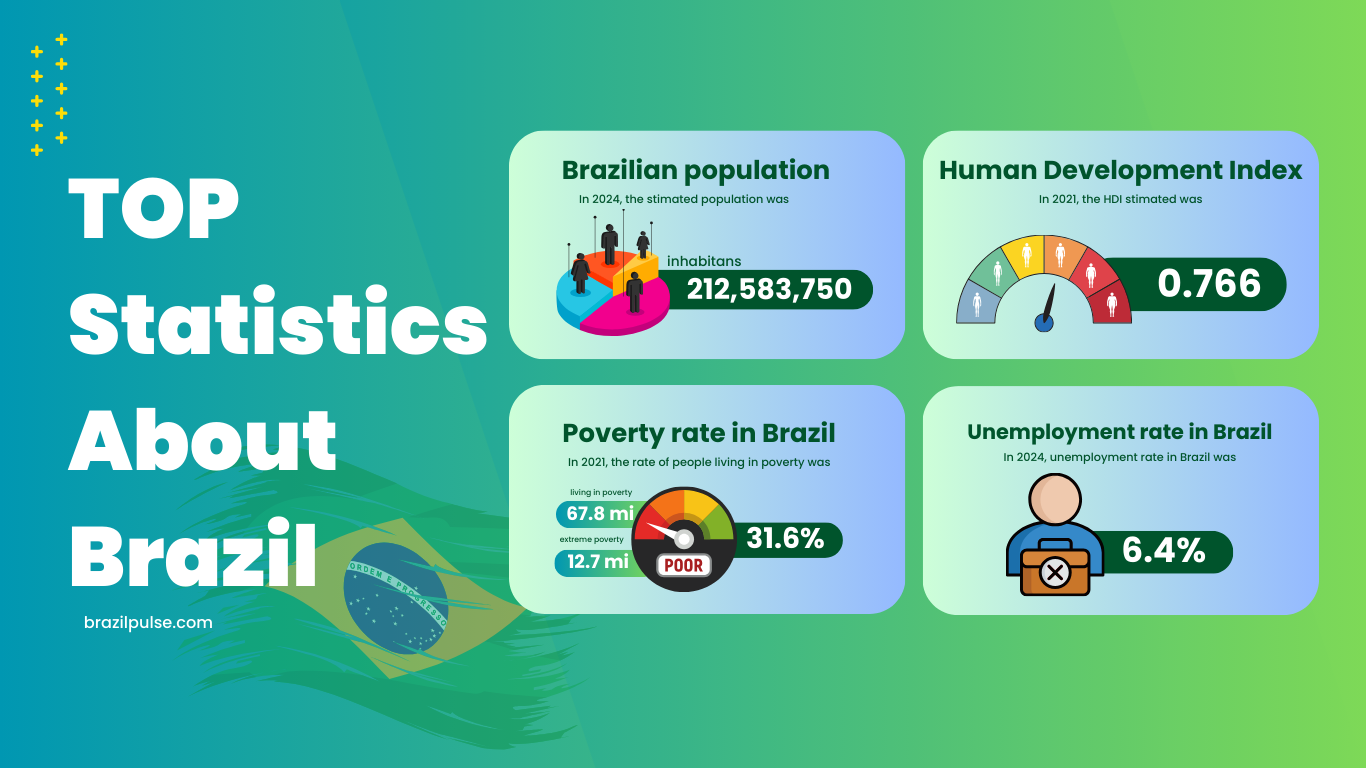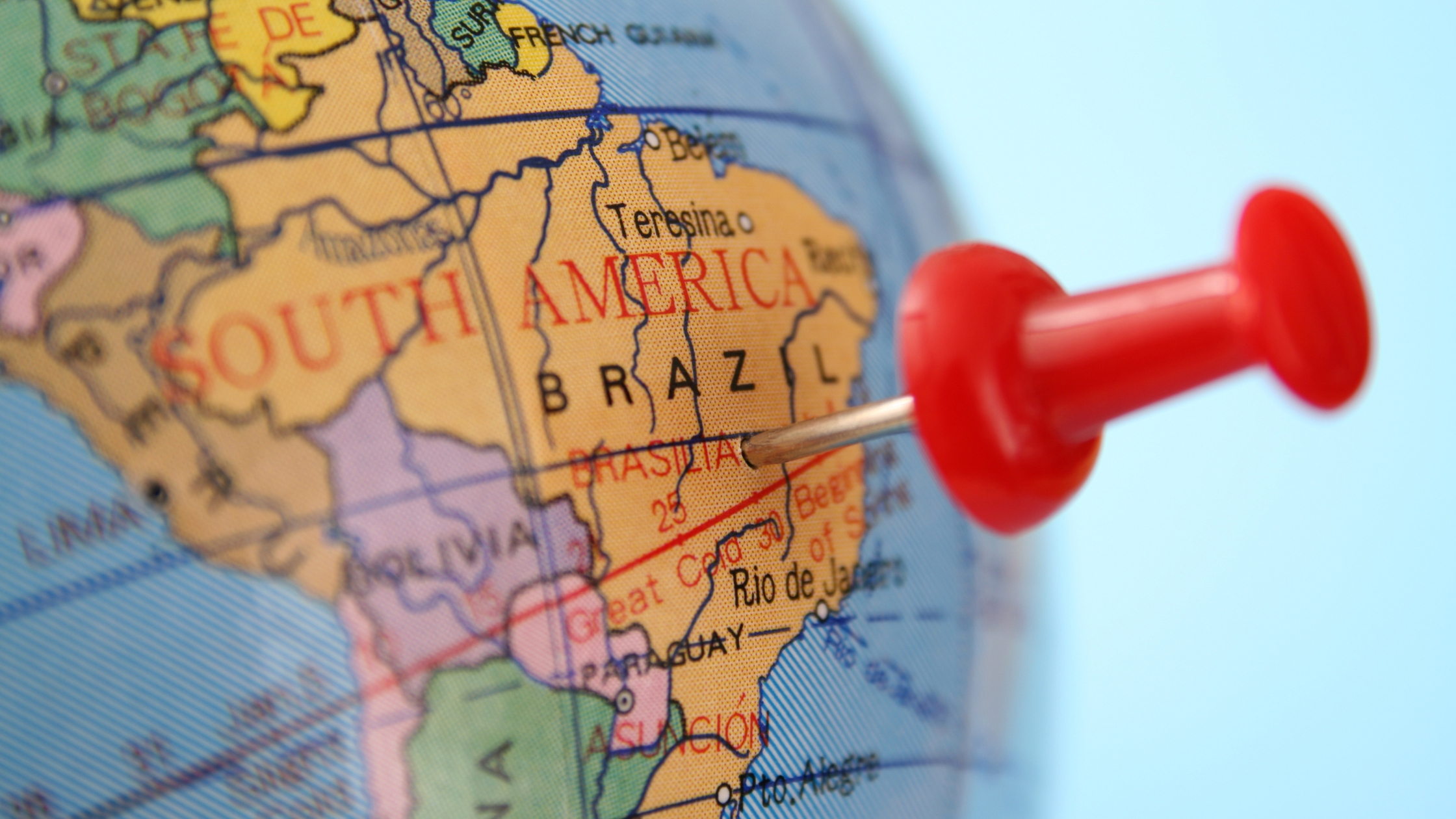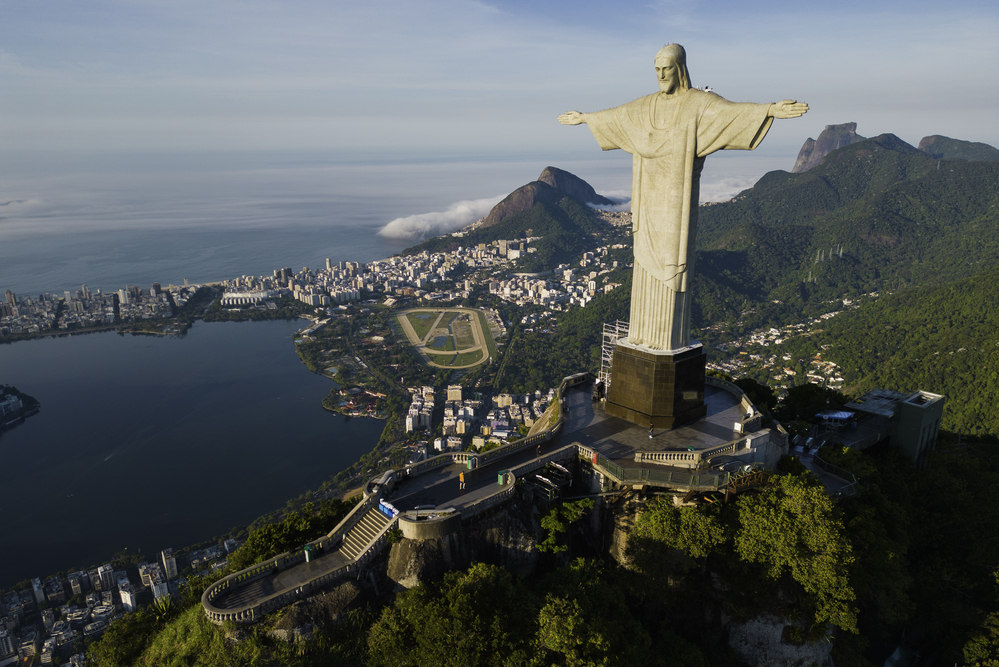Brazil is an immense country filled with natural riches, which not only make it a destination for tourists from all over the world but also attract investors interested in exploring new business opportunities.
In recent decades, Brazil has attracted the spotlight of world powers, after all, the country has stood out in the economic scenario alongside powers such as China and India.
All this attention arouses curiosity about Brazil that goes far beyond soccer, Carnival, and beautiful beaches.
With this in mind, in this article, we have compiled various statistics about Brazil that can be useful as reliable sources of information. Check them out below.
List of the Top 15 Statistics About Brazil
We have compiled the main statistics about Brazil, all sourced from the Brazilian Institute of Geography and Statistics (IBGE), an official government agency responsible for the country’s official statistics.
In addition to the data, we present an infographic associated with each of them. Check them out below.

Brazilian population
Brazil conducts a population census every 10 years. Therefore, the most recent census was expected to be in 2020.
However, due to the pandemic, the population census did not take place in the expected year and was delayed by 2 years.
The last population census in Brazil conducted by IBGE took place in 2022 and recorded a total of 203,080,756 inhabitants.
In 2024, the estimated population was 212,583,750 inhabitants.
Human Development Index (HDI)
The Human Development Index (HDI) of Brazil in 2021 was 0.766, classifying the country as having high human development, according to the United Nations Development Programme (UNDP).
The HDI is a composite index that measures three dimensions: a long and healthy life, the acquisition of knowledge, and a decent standard of living.
The UNDP’s HDI Panel (Atlas of Human Development in Brazil) provides a detailed analysis of Brazil’s HDI and its components, including health, education, and income indices.
In 2021, these indices were 0.760 for longevity, 0.705 for education, and 0.730 for income.
There are significant disparities in HDI among different racial and gender groups in Brazil. In 2021, the HDI for white people was 0.810, while for black people it was 0.721.
Similarly, the HDI for women was 0.791, compared to 0.740 for men.
Although Brazil’s high HDI indicates significant progress in overall human development, the observed disparities among racial and gender groups highlight the need for ongoing efforts to promote equity and inclusion in access to health, education, and economic opportunities.
Poverty rate in Brazil
Unfortunately, Brazil is one of the countries with the highest rate of social inequality in the world.
For this reason, Brazil has a concerning poverty rate.
The rate of people living in poverty was 31.6% in 2022, while the proportion of people in extreme poverty fell to 5.9% in the same year.
In 2022, there were 67.8 million people living in poverty and 12.7 million in extreme poverty.
In 2022, among people up to 14 years old, 49.1% were poor and 10.0% were extremely poor.
Among the population aged 60 and over, 14.8% were poor and 2.3% were extremely poor.
Among people of black or brown color or race, 40.0% were poor in 2022, a rate twice as high as that of the white population (21%).
Unemployment rate in Brazil
Unemployment classifies people (aged 14 and over) who want to work, look for jobs, but cannot find any.
According to IBGE, there are 7 million people in Brazil who are classified as unemployed.
To be considered unemployed, it is not enough just not to be working, such as students who dedicate their time only to studies, housewives who do not work outside, and entrepreneurs who have their own business.
In 2024, the unemployment rate in Brazil was 6.4%.
The unemployment rate is the percentage of the workforce that is unemployed.
Inflation in Brazil
Inflation is the general increase in the prices of goods and services over time.
Thus, money loses some of its purchasing power, meaning that what could previously be bought with a certain amount becomes more expensive.
Inflation can be caused by various factors, such as increased production costs, growing demand for products, or even changes in the global economy.
IBGE calculates inflation using two price indices: IPCA and INPC. Brazilian inflation in 2024 is 4.83%.
When it is high, it affects household budgets, which need to spend more to maintain the same level of consumption.
GDP (Gross Domestic Product)
The Brazilian economy demonstrated a growth of 3.4% in 2024, reaching a total GDP of R$ 11.7 trillion.
The 3.4% GDP growth in 2024, driven by strong performance in the services and agriculture sectors, suggests a diversified economic base.
This growth rate signals a positive trajectory for the Brazilian economy.
The services sector was a significant contributor, expanding by 3.1% in 2024, reflecting the sector’s dominance in the Brazilian economy.
The industrial sector also showed positive momentum, with a reported increase of 2.5% in the last quarter of 2024.
Meanwhile, the agricultural sector experienced substantial growth of 15% in 2023, highlighting its crucial role in the Brazilian economy, particularly in exports and job creation.
Schooling
The schooling rate in Brazil refers to the percentage of people between 6 and 14 years old who attend school in relation to the total number of people in the same age group.
Although Brazil has made significant progress in recent years, there are still challenges, such as inequality in access to quality education, especially in rural areas and for people from less affluent families.
Schooling is essential for the country’s development, as it provides citizens with the knowledge and skills necessary for the job market and for life in society.
The government has implemented policies to improve education, but the quality and infrastructure of schools are still a point of concern in many regions.
In 2023, according to IBGE, the Continuous PNAD – Continuous National Household Sample Survey, recorded a schooling rate of 99.4%.
Literacy Rate
The literacy rate in Brazil represents the percentage of illiterate people aged 15 and over in relation to the total number of people in the same age group.
These are people who cannot read or write, or who have great difficulty doing so.
Although Brazil has made progress in reducing this rate over the years, illiteracy is still a problem, especially in poorer regions and in the countryside.
Often, the people most affected are those who did not have access to quality education or who had to start working early, leaving their studies behind.
Illiteracy can hinder access to better job opportunities and affect quality of life, so it is a constant challenge for the country to seek solutions and ensure that everyone has the chance to learn and develop.
The literacy rate is published by PNAD and, in 2023, recorded a percentage of 5.4%.
Performance of Key Economic Sectors and Investment Opportunities
The services sector in Brazil demonstrated a growth of 3.1% in 2024, highlighting its significant contribution to overall economic expansion.
Industrial production showed mixed performance, with a recession in seven of the 15 localities surveyed in February 2025.
This suggests potential challenges or varied conditions within the industrial sector.
The agricultural sector experienced substantial growth of 15% in 2023, indicating its strength and importance to the Brazilian economy.
The varied growth rates among different economic sectors (strong in services and agriculture, but with some fragility in industry) suggest a diversified investment scenario.
Transport Infrastructure
Investments in the ports and airports sectors in the period 2023-2024 exceeded the total investments made between 2019 and 2022.
This indicates a renewed focus and commitment to improving transport infrastructure, essential for business operations and logistics.
The Brazilian government foresees the highest number of airport infrastructure project deliveries in the last decade during 2025, suggesting significant expansion and modernization of air travel infrastructure.
Brazilian ports reached their highest cargo handling volume in 2024, with 1.32 billion tons.
This highlights the critical role of ports in facilitating trade and the economy.
The significant increase in investments and the record cargo handling volume at ports, along with the expected increase in airport project deliveries, signal a positive trend in the development of Brazil’s transport infrastructure.
This improvement is likely to reduce logistical bottlenecks, enhance connectivity, and create more efficient supply chains, benefiting businesses in various sectors.
Foreign Direct Investment Flows
Foreign Direct Investment (FDI) in Brazil recorded a significant increase of 138% in 2024, according to data from the Central Bank of Brazil.
This substantial increase indicates growing confidence among international investors in the Brazilian economy.
The notable increase in foreign direct investment in 2024 is a strong positive signal for the Brazilian economy, suggesting growing international interest and confidence.
Number and Quality of Airports and Recent Developments
Significant investments have been directed to the ports and airports sector in Brazil, with total investment in 2023 and 2024 exceeding the amount invested between 2019 and 2022.
This indicates a strong governmental focus on modernizing air and maritime transport infrastructure.
The federal government foresees the delivery of the highest number of airport infrastructure projects in the last decade during 2025.
This expansion is expected to increase airport capacity and improve air connectivity across the country.
The concession of airports to private sector operators is driving the growth of air transport in Brazil.
This suggests that private investment and management are playing a fundamental role in modernizing airport infrastructure and services.
Private investment in airports is substantial, often doubling the direct government investment.
The substantial increase in airport investment, along with the large number of project deliveries expected for 2025, points to significant modernization and expansion of Brazil’s air transport infrastructure.
The active involvement of the private sector through concessions and direct investment suggests a strategic approach to improving efficiency and service quality in the airport sector.
These developments are likely to benefit both tourism, by increasing accessibility to various regions, and business travel, by improving connectivity and reducing travel times.
Main Ports and Their Cargo Handling Capacity
Brazilian ports reached a record year in 2024, with a total cargo handling of 1.32 billion tons.
This unprecedented volume highlights the critical role of Brazil’s ports in facilitating international trade and moving goods.
The federal government announced significant new investments in the port sector, with one report mentioning R$ 14.5 billion in planned investments and another indicating a massive R$ 78.5 billion initiative to boost port infrastructure.
These investments aim to improve efficiency, expand capacity, and modernize port facilities.
The Ministry of Ports and Airports is the main government entity responsible for the development and supervision of Brazil’s port infrastructure.
The record cargo handling at Brazilian ports in 2024 underscores their vital importance to the country’s economy, particularly for commodity exports and manufactured goods imports.
The significant investments planned by the government signal a commitment to further developing and modernizing port infrastructure to handle increasing trade volumes and improve logistical efficiency.
This is likely to benefit companies involved in international trade by reducing transportation costs and transit times.
Condition and Extension of the Road Network
The quality of Brazilian highways is said to have reached its highest historical index, indicating improvements in road infrastructure.
This is a positive development for passenger and freight transport.
The government is making significant investments in road infrastructure, with one report mentioning a planned investment of R$ 45 billion in 2025 and another highlighting R$ 24 billion invested in transport infrastructure in 2024, with a substantial portion likely allocated to highways.
The National Department of Transport Infrastructure (DNIT) is the main government agency responsible for managing, maintaining, and developing the federal road network in Brazil.
The reported improvement in the quality of Brazilian highways, along with significant government investments in this sector, suggests a positive trend in the development of road transport infrastructure.
Better quality highways facilitate smoother and safer travel for tourists and more efficient and cost-effective goods transport for businesses.
Ongoing investments and maintenance are crucial to sustaining and further improving the condition of the road network across the country.
Conclusion
Brazil presents a dynamic scenario with notable positive trends in various sectors.
International tourism shows robust growth, with record numbers of arrivals and revenue, indicating the country’s growing attractiveness and the economic benefits derived from the sector.
There are also general economic indicators pointing to GDP growth, driven mainly by the services and agriculture sectors.
We cannot overlook the transport infrastructure that has received significant attention.
Increasing investments and notable improvements have been made in airports and ports, essential for tourism and business activities.
Finally, Brazil has a high Human Development Index, but inequalities persist among racial and gender groups, underscoring the need for ongoing efforts to promote more equitable development.

